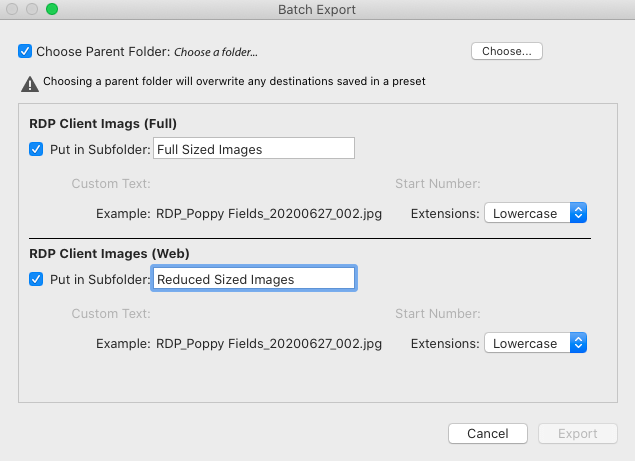July 1, 2020
Lightroom Update 9.3 from Adobe
Lightroom has had an update from Adobe that adds improvements to both functionality and performance and fixed a few bugs

Every three months or so, Adobe launches an update to the ever-popular Lightroom program. Unlike some other editing programs, every update to Lightroom is part and parcel of the monthly subscription. I think this is one of the benefits to the subscription model versus the pay to upgrade one. That said, it depends on the quality of the updates if it’s worth paying the monthly fee. This week we’ll look at the version 9.3 update to see if the new features justify the cost.
Improvement to the Lightroom user interface
The first noticeable change after installing the latest update is the icon for Lightroom Classic has had a letter ‘C’ added to the image. It doesn’t add anything to the performance or functionality, but if they are spending time and money on doing this, it gives an indication Classic is going to be part of the furniture for a good while longer. There’s a switch of the cloud storage and sync information from the left of the screen to the right with its own icon.
Tone Curve Panel
Inside the program, the first significant change is to the Tone Curve panel in the Develop module. It’s now a lot easier to be able to switch between different types of tone curves. A Parametric Curve (where you type numerical values to adjust a tone curve). A Point Curve (where you slide points along an axis). Finally, the ability to change the tone curves of the red, green and blue channels individually.

Colour and Hue Adjustments
There’s been a tweak to the look and feel of the Color part of the HSL/Color panel. Now, we see the colours as circles instead of the old blocks. Not much of a change, but it looks a bit nicer.
While we are in the area of adjusting colours, there has been some new functionality added into the various local adjustment tools of radial filter, graduated filter and adjustment brush. We can now make some fine adjustments to the Hue slider. The fine adjustment can come in handy if applying a graduated filter to a scene where you want to change the blueness of the sky. By combining the slider with the range mask, you can adjust the sky colour without affecting any blues in the shadows.

ISO Adaptive Presets
Another change included in the update is the ability to create presets that will vary depending on the ISO used to capture the image. The method to create the preset is a bit messy, but it could be a timesaver for people used to working in low light, such as wedding photographers.
– Identify two or more images with different ISO values based on which you want to create the preset.
– Make necessary edits to these images. For example, set different Luminance Noise Reduction values for different ISO images.
– Select these images and click Create Preset.
– In the New Develop Preset dialog box, after selecting the settings to include in the preset, select Create ISO adaptive preset at the bottom of the dialog box and click Create.

Centered Crop Overlay
When cropping a photo in Lightroom, you’ll probably see a 3 x 3 grid appear. Using this grid makes it easy to crop images and retain the rule of thirds. Sometimes, you may want to crop a picture that keeps the subject in the centre of the shot. The addition of a 2 x 2 overlay is going to make this task a lot easier.
To switch the crop overlays, press the crop button at the top of the panels in the Develop module. You can toggle through the various overlays by pressing the ‘O’ button.

Default Presets
The final user interface enhancement is a new set of Default Presets added on the left-hand side of the develop module. The ten new preset options apply a combination of different colour profiles, noise reduction and lens corrections. If you use my twenty-second edit process preset from the blog in April 2018, then you’ll probably not need to use these new additions.
Performance Improvements
One of the just criticisms of Lightroom is that it can be annoyingly slow. Adobe has been responding to this over the last couple of years. Every update has some improvements on performance, and the 9.3 update is no exception.
Scrolling through the catalog grid in the Library module using the arrow keys, mouse, trackpad, or touch has been improved. Adobe state that this is most noticeable when you have an extensive catalog. It is good practice to have one large catalog rather than lots of small ones, and this improvement helps.
The speed of searching and filtering collections has been improved. There’s been an improvement in the way sliders are working in the Develop module too. All of these are welcome changes to help speed up the editing process.
Other updates
On the release notes sent out by Adobe to the 9.3 Lightroom update, they have a section called ‘Other enhancements’. One of the additions here is something that will be nice when I am working with clients. Quite often, there’s a request to provide two sets of images. One will be full-sized that they can use on promotional material, and the other reduced in size for social media use. A feature called multi-batch export, added in the Lightroom 9.0 update has been enhanced to add a pop-up box. Now, it’s possible to add the folder names where they’ll go to quickly and easily.

A very noticeable change is the tidy up of the Publish Services section. Quite a few years ago, Facebook stopped the ability to publish directly from Lightroom to the platform using a Print Service. Despite this, Lightroom still had a panel which made it look like it could still work – finally, it’s gone!
Another long overdue bug fix has been where the Edit in Photoshop function was used. If the file type were selected as a Compressed TIFF, then it would have been fair to expect that the TIFF file would, indeed, be compressed. It wasn’t the case until the 9.3 updates, and now our hard drives can breathe a sigh of relief!
There are a few other changes listed that have added, a few warning boxes that pop up and the ability to add information around images taken for 3D models. They are relatively minor, so I’ll not go into them in too much detail. If you’re interested, then you can view them on the What’s New page on the Lightroom website.
The last addition is some camera and lens profiles. They mainly relate to new versions of iPad and iPhone and the Huawei P40. We can expect more in this space in the coming months as Sony, Nikon and Canon are all expected to bring out new models during July.
Give us your feedback
If you’ve got any questions or comments, leave them below. You can sign up for the Edinburgh Photography Workshop monthly newsletter where you’ll get regular updates on exciting things happening in photography and some great tips. Sign up by clicking here.
